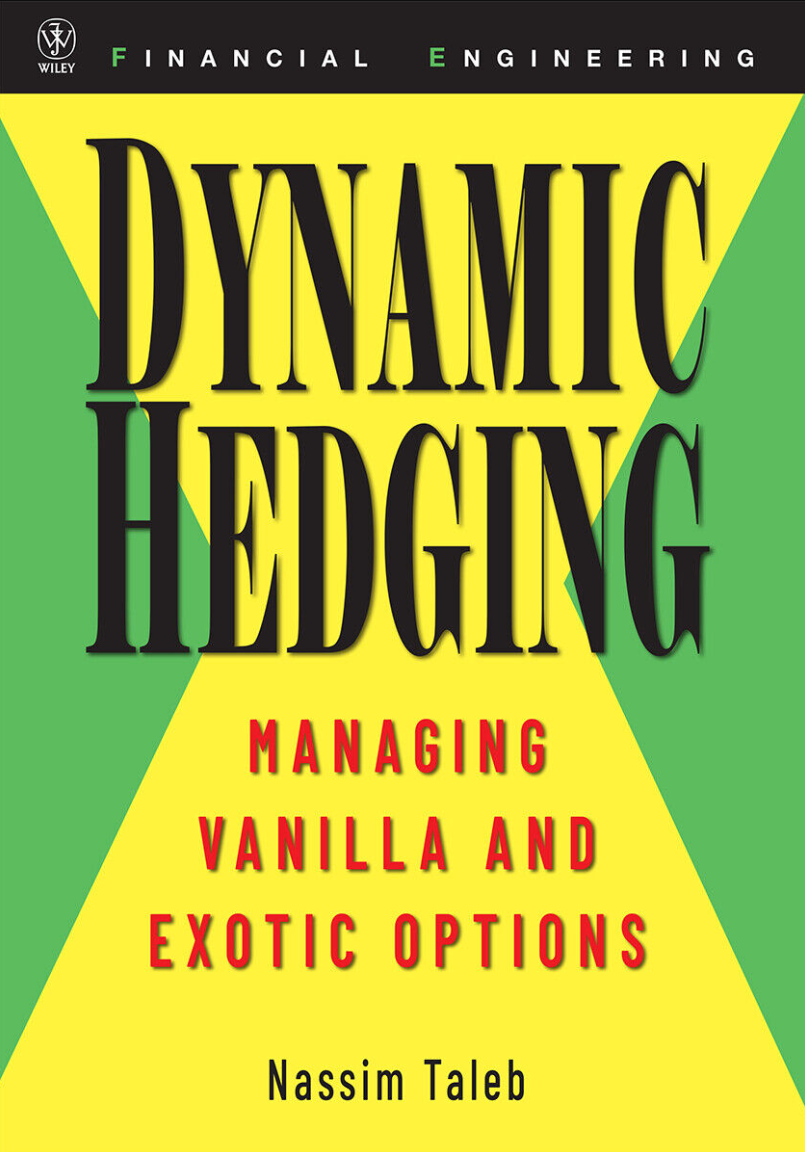Dynamic Hedging

★★★★ If you have an edge (positive EV), the key is 1) increase the number of trades and 2) smaller bets to reduce the frequency of negative runs.
★ Many studies report the existence of a first-order negative autocorrelation of price changes (the following move is immediately more likely to be of the opposite sign than the previous one). There exists an auto correlation for price changes when the observations are very frequent, as well as the vanishing of the correlation when observations are separated by more than a few minutes (~4 min).
Personal stress usually results from the trader's inability to set his pace.
Market makers are crippled by the size of their positions in relation to their appetite for risk.
Market makers lose money chronically when markets experience shocks but produce profits in normal conditions when they can earn the spread without much risk. In that respect, market makers appear to be short volatility.
★★ One of the key properties of probability laws is that they are counter-intuitive. People look at a casino seeing how small an "edge" translates into virtually certain profits and infer that the same rules apply to a man rolling a dice. The sums of random walks (net profits from the sum of roulette tables) act differently from the final sum of a single random walk (a gambler's net results at the end of one session on one roulette table). A modest advantage on a sum of random walks translates into certain profits. The same advantage of one roulette table is generally drowned by the volatility of the random walk itself. Even with a small advantage, a counter-intuitively high number of negative runs would mar the party. The only way to reduce the frequency of negative runs would be to increase the number of trades and make the bets smaller.
One could think of a roulette table and view the edge of a trader who has negative odds with a system that gives him a 45% chance of winning. What is the probability of the person betting $1 being in the black after 30 throws? Using the cumulative binomial distribution, he has at least a 35% chance of ending up profitable. If the gambler sliced the bet into pieces of $0.10 and compensated with 10x more bets, the final number of positive results would be 4.6%.
To assess the relative performance of a trader to the market: monitor the transaction frequency to determine the fit between the trader's intention and the actual events in the market. The higher the frequency of trades, the higher the statistical significance of the trader's performance.
★★ How aggressive a trader needs to be depends highly on his edge, or expected return from the game:
- When the edge is positive (the trader has a positive expected return from the game,), it is always best to take the minimum amount of risk and let central limit theorem slowly push the position into profitability. This is the recommended method to progressively increase the stakes, in proportion with the accumulated profits.
- When the edge is negative, it is best to be exposed as little as possible to the negative drift. Betting small would ensure a slow and certain death by letting central limit catch up to him.
- At any rate, when the trader owns an option on his profits (gets a cut of the upside without having to share into the downside), as is the case with traders using other people's money, it is always optimal to take as much risk as possible.
The ArcSine Law for a random walk P/L:
Counter-intuitive phenomenon concerning the distribution of the P/L. The probability of spending 1 month or 11 months in the black or red is higher. The probability of spending 6 months is the lowest of all. Distribution curve is "U" shaped.
Do not use Sharpe ratios with nonlinear products, particularly options.
Liquidity is the most serious risk management problem. A substantial part of unforeseen losses is due to either market jumps caused by illiquidity or to liquidations that substantially move the markets against one's position.
★ Conditional upon the market touching some level, there will be a predictable price action by some barrier option liquidator that will precipitate the market in some known direction. A fact that shows why markets have memory is the noise level and frenzy activity that surrounds a new low or a new high in any market, regardless of the actual volatility that led there.
Inefficiencies in the market will last longer than traders can remain solvent.
There is no such thing as constant volatility and correlation.
The continuous time delta is not always a hedge ratio.
Delta fails adequately as a measure for risk. It provides the same mean for an extremely risky position and an extremely safe one.
A rise in volatility causes the death of an OTM call to rise and an ITM call to drop.
For an ATM option, gamma is maximum when the option nears expiration. For an OTM option, gamma is maximum when the option is far away from expiration.
Vega is highest for an ATM option. The Vega of ATM options stays the same when volatility rises but the Vega of options away from the money rises. The Vega of ATM options is stable to volatility. Options that are away from the money (ITM or OTM) increase due to increasing volatility and decrease due to decreasing volatility.
One should not compare or add the Vegas of two options of two different maturities without any weighting in the measure.
★ Shorter expiration options are more impacted by changes in volatility.
At times of shock, the front options tend to overact and lead. The back month options usually wait to see if there are structural changes or if the change in volatility was a simple blip.
There is a strong mean reversion in Vega where the average seems to drop after a large up/down move.
Sometimes the existence of arbitrage is revealed by a significantly lower or higher forward volatility for a given bucket since options are traded in spot volatility terms rather than forward volatility.
Losses from theta are generally more than predicted, as premium buyers become the victims of losses from theta caused by quiet markets compounded by losses from the drop in implied volatility that accompanies quiet markets (expectation of future market declines).
A high alpha (gamma rent) means that the premium owner is not adequately compensated for the costs of the time decay.
Selling short-term options do not capture move time decay vs longer term options. The alpha is the same regardless of expiration. It is actually a delta play NOT a theta play.
Passage of time pushes all ITM options further ITM → increasing deltas
Gamma increases with time.
The shorter the option, the greater the effect of time on the structure.
Volatility moving up exerts the effect of reversing time on an option portfolio. Likewise, volatility moving down cancels time and carries the exact same effect as bleed.
Black-Scholes underprices OTM options and overprices the upside.
"Long" or "short" volatility carries no true risk management meaning one needs to qualify the gammas and the Vegas.
Hedging increases your risks.
Random walk follows a bell shaped probability distribution.
 Nathan Lam
Nathan Lam